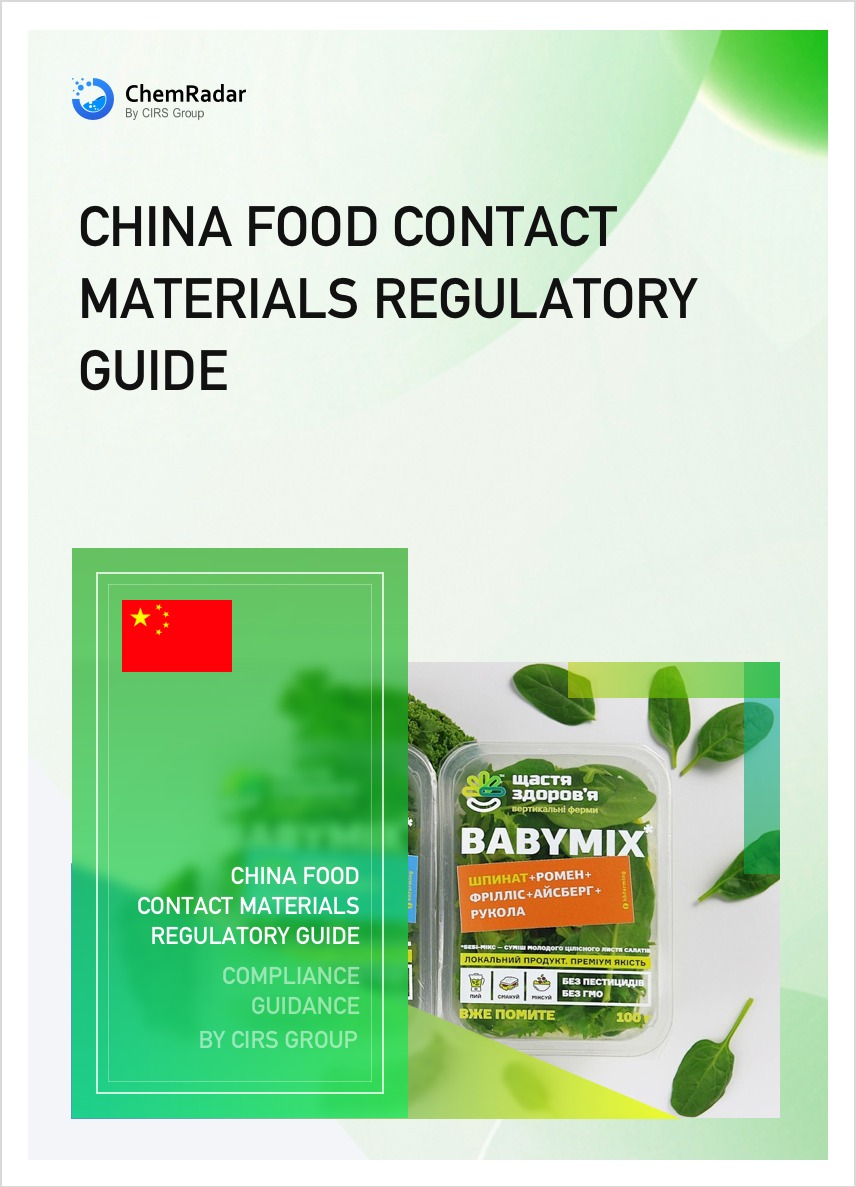3.Corporate Compliance Obligations
3.1 Declaration of Conformity (DOC)
According to the 'National Food Safety Standard-General Safety Requirements on Food Contact Materials and Articles' (GB 4806.1-2016), the Declaration of Conformity (DOC) is a formal document provided by manufacturers, importers, or suppliers of food contact materials and articles to downstream supply chain entities (such as customers, regulatory agencies), declaring that their products comply with relevant Chinese national food safety standards. It is the core proof document for enterprises to fulfill compliance obligations and the primary basis for review during spot checks by the State Administration for Market Regulation (SAMR).
- Enterprises need to pass the Declaration of Conformity downstream, clearly stating that the product complies with relevant national standards, including requirements for raw materials, additives, migration limits, etc.
- The declaration content must cover material composition, test results, usage conditions, and safety assessment conclusions.
- Substances/materials requiring a DOC: For substances already listed in the national standard catalog, such as Table A of GB 9685-2016, Table A.1 of GB 4806.7-2023, Table A or Table B of GB 4806.15-2024; substances approved by the National Health Commission.
3.2 Supply Chain Responsibility Management
In the food contact material supply chain, the main categories of goods passed between upstream and downstream entities are chemical substances, intermediate materials, final materials, or finished products (end products). Therefore, we have outlined the food contact material supply chain as shown in the figure below.

Chemical producer: Chemicals refer to the basic chemical components used in the production of food contact materials and articles, such as additives, solvents, auxiliaries, colorants, etc., excluding monomers or starting materials. The operators of chemical substance production enterprises are chemical producers, who produce in accordance with the applicable provisions of GB 31603 'National Food Safety Standard-General Health Code for Production of Food-contacted Materials and Products' and provide conformity declaration documents for chemical substances, explaining the authorization and usage restrictions of their products in food contact materials, ensuring that the quality specifications of chemical substances meet the requirements for producing food contact materials.
Intermediate Material Producer: Intermediate materials are those that require further processing and reshaping to produce the final product, such as base resins, masterbatches, pre-mixes, bottle preforms, semi-finished films/sheets, and uncompressed plastic layers in composite materials. The operators of intermediate material production enterprises are intermediate material producers, who are responsible for the substances/materials used/added and generated during the product production process, ensuring that the materials and substances comply with regulatory requirements, requesting compliance declarations from upstream, and producing in accordance with GB 31603, the relevant requirements in the compliance declaration, and related food contact material safety standards. Based on the compliance declaration documents provided by upstream and the safety analysis of their own production processes, they provide compliance declarations to downstream customers, explaining the compliance and restriction requirements of materials and additives to ensure the compliance of the final product.
End-Product Manufacturer: End-products are those that can directly contact food but have not yet contacted food. The manufacturers of end-product production enterprises are end-product manufacturers, who are responsible for the raw materials, intermediate materials, added substances, and generated substances used in the production process, ensuring their compliance with regulatory requirements, requesting compliance declarations from upstream, and producing in accordance with GB 31603 and the relevant requirements in the compliance declaration and related food contact material safety standards. Based on the compliance declaration documents provided by upstream and the safety analysis of their own production processes, they provide compliance declarations to downstream customers according to the intended use of the product and retain supporting documents for the compliance declarations.
End-Product User: Refers to the enterprise operators or individuals who use end-products to contact food or food raw materials/semi-finished products. They should request compliance declarations from upstream to ensure that the food contact materials used comply with regulatory requirements and are used correctly (e.g., packaging suitable for specific foods/food types, packaging temperature, time, etc.).
Marketer: Marketers include importers, wholesalers, and retailers. Distributors should store and transport food contact materials according to supplier requirements, and all distributors, except final product retailers, must pass compliance declarations to their direct customers.
Consumer: Individual consumers who purchase food, final products, or packaged food from retailers. Consumers should follow the labels or usage instructions on the product packaging and use the product correctly, especially the restrictive usage requirements such as the food or food category in contact, the time and temperature of contact with food, etc.
3.3 Labeling and Identification Requirements
The identification content should include the product name, material, compliance declaration with relevant regulations and standards, the name, address, and contact information of the producer and/or distributor, production date, and shelf life (when applicable).
In addition to meeting the aforementioned requirements, food contact materials and finished products should also be labeled with terms such as 'for food contact,' 'for food packaging,' or similar phrases, or be imprinted or affixed with the spoon and chopsticks symbol (as shown in Figure A.1), except for products with a clear food contact purpose (such as chopsticks, frying pans, etc.). Products with special usage requirements should indicate the method of use, precautions, intended use, usage environment, and temperature. For products where the usage conditions are explicitly specified by relevant standards or where exceeding the usage conditions may pose a higher food safety risk, the usage conditions should be described in a special or prominent manner to ensure that users can handle, display, store, and use the product safely and correctly.

Figure A.1 Spoon and Chopsticks Symbol





